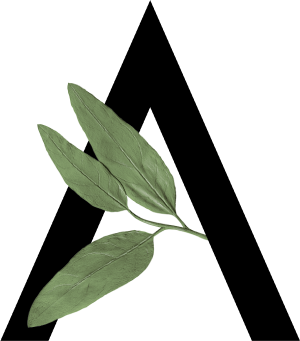Laughter, Medicine of the Body and the Mind
How good it is to laugh! The mere mention of the word makes us smile. Without even resorting to the results of scientific research, we feel the benefits of laughter as much on the body as on the mind. “Laughter is man’s own”, reminds us François Rabelais, this humanist doctor and poet who marked the Renaissance with his works and his writings. Like an ode to life, laughter runs through time. It is explored by philosophers, doctors, psychoanalysts, authors and poets. Laughter is also the essential ingredient in theatrical works, cinema, circus and street performances. Today, laughter is also recognized as a therapeutic tool, a beneficial remedy for both the body and the mind.

Laughing to Better Heal
In the 1970s, laughter is introduced into medical practice thanks to the groundbreaking work of Dr. Hunter “Patch” Adams. This doctor, clown, artist and founder of the famous Gesundheit Institute in 1971, used laughter and humor as a “therapeutic tool” to calm children and help them respond better to treatments. Today, research reveals that the effects of laughter affect the physical, mental, emotional and spiritual dimensions of the human being. From laughing yoga to laughter therapy, the methods are available in different organizations (for example, hospitals, schools, youth centers, laugh clubs, healing centers, etc.), to offer a preventive or therapeutic tool, or simply for the pleasure of celebrating life.
At the Centre Hospitalier de l’Université de Laval (CHUL), the Centre mère-enfant’s, Dr. Clown, is a key figure in supporting families and children. His mere presence triggers the children’s smiles. When he speaks, bursts of laughter erupt into the rooms like a sparkling firework of color and happiness. Laughter, a symbol of joy and well-being, is an involuntary physical response that manifests itself in the presence of an emotion or a pleasant situation. Dr. Clown’s passage helps kids and parents see the sun through the clouds and shadows of life.
A Wave of Happiness
From a physiological point of view, laughter involves many muscles and organs in our body. It involves the face, the larynx, the ribcage, the heart, the abdominal muscles, the legs and of course the brain. It spreads from head to toe, like a wave of happiness by creating specific mechanisms and secreting molecules that cause this state of relaxation and deep well-being. Let’s discover together some mechanisms at the origin of its therapeutic benefits.
“Laughing, a Stationary Jog”
It is to Dr. Henri Rubinstein that we owe this magnificent expression. This doctor and neurologist worked on the physiological mechanisms, history and social function of laughter. His research is one of many investigations that confirms today that laughter provides the same effects as a mild and moderate exercise. By naturally inducing a maximal amplitude of the respiratory rhythm and by creating an action on the diaphragm and most of the muscles of the body as well as a massage of the ribs, laughter is a pleasant and soft alternative, to add movement to our day.
Smiling at Life
“Humor is not only liberating, but sublime and elevated,” is one of Sigmund Freud’s most famous quotes. Indeed, laughter stimulates the hypothalamus, a gland that could be compared to a production center of smile emojis. These endorphins reduce the excess of adrenaline and cortisol, the hormones involved in the mechanism of stress. Our “happiness hormones” create a relaxation of tension and soothe the body and mind.
In addition, laughter balances the sympathetic and parasympathetic systems that make up the autonomic (or vegetative) nervous system. This system allows you to regulate all the automatic bodily processes such as blood circulation, heart rate, blood pressure, respiration, digestion, temperature maintenance and our stress response. The sympathetic nervous system, associated with the activity of norepinephrine and adrenaline (neurotransmitters) is responsible for the so-called “fight or flight” response in the presence of stress. Conversely, the parasympathetic system induces the secretion of acetylcholine, a neurotransmitter that induces a “relaxation” response and a slowing of heart rate and breathing.

A Natural Pain Reliever and Without Side Effects
It is accepted that pain is one of the most frequent reasons for consultation. It is also at the top of the list of reasons for medical leaves. Research shows that laughter, like physical activity, stimulates the cerebral secretion of catecholamines or “hormone of awakening.” These molecules strengthen the production of endorphins, our natural morphine, thus reducing pain. Laughter is therefore a natural pain reliever, available every day in our personal and universal pharmacopoeia.
Laughing to Better Digest
This is probably one of the least known benefits of laughter. Yet it is a precious remedy to support digestive health. From a mechanical point of view, laughter causes movement and massage of the intestine, pancreas and liver. It is also an effective tool for stimulating peristalsis and preventing constipation. From a biochemical point of view, laughter stimulates the secretion of pancreatic juice (an enzyme involved in the digestion of carbohydrates, lipids and proteins) and bile (a liquid essential for the digestion of fats and the elimination of excess cholesterol). The action on the parasympathetic axis also has effects on the stimulation of the salivary glands and digestive juices.
A Tool to Promote Learning for Young and Old
In schools, the play dimension stimulates children’s creativity. Later, laughter relaxes students and reduces the fear of failure or simply making mistakes. Laughter is without a doubt one of the best educational tools for building and strengthening links between teachers and children.

***
Cultivating laughter at the heart of our lives is a cure for the body and the mind. Even before learning to speak, the newborn perfectly masters this art essential to the exploration of life. Laughter, like music and dance, is a universal language that unites civilizations and cultures. It is a generator of links within the community. Laughter brings families and friends together. It rallies colleagues and creates a spirit of brotherhood. It is a melody that strengthens human values in all institutions and organizations. Laughter, like a wave of happiness, originates within oneself and spreads by cultivating the vibrations of joy.

